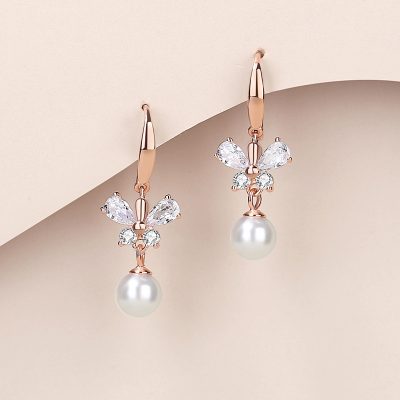The rareness of natural pearls. Since natural pearls are very rare and the price of available pearls is too high, we do not sell natural pearls.
Natural pearls are graded by carat weight.
Artificial cultured pearls are graded in millimeters.


Cultured pearls—the process of creation requires human intervention, but the pearls obtained are as real as natural pearls.
Cultured pearls are cultivated by one of two bivalve molluscs: freshwater mussels or saltwater pearl molluscs.
Pearl type
We offer a variety of freshwater, South China Sea and Tahiti cultured pearls, as well as two separate Akoya cultured pearl series. We have many styles of pearl jewelry, including nail styles, fashion earrings, chains, necklaces, pendants and bracelets.
Fineness
The color of pearls is also called body color, presenting various tones such as white, white pink, black, silver, gold or pink. Pearls can also have secondary colors, or associated colors, which are visible when light reflects off the surface of the pearl.
luster
The pearl emits a strong light called luster. Luster is the combination of the surface luster of the pearl and the light emitted from the inside, which is formed by the light reflected by the pearly calcium carbonate crystals. The luster is determined by the thickness of the nacre, the degree of translucency and the arrangement of levels. These factors depend on the type of pearl and how long it allows it to grow.
shape
The basic pearl shapes can be divided into the following categories: spherical / round / nearly spherical / symmetrical / oval / button / pendant / teardrop / baroque (asymmetric) / semi-baroque / baroque / surface defects
Since pearls are grown by mollusks, the nacreous coating does not necessarily stick together smoothly. Flaws and bubbles (called surface flaws) may appear during the layering process. The smooth-surfaced pearls are of high quality and are highly sought after, and their prices are matched.


size
The size of a pearl largely depends on its type. The size of freshwater cultured pearls is about 3.0 to 13.0 mm, the size of Japanese Akoya cultured pearls is about 6.0 to 8.5 mm, and the size of South China Sea and Tahitian pearls can reach 13 mm.
How to identify true and false pearls
The key difference between real and fake pearls is their surface touch. The surface of real pearls is slightly uneven to the touch, while the surface of plastic or glass beads is very smooth. Since pearls are formed naturally (or formed by artificially imitating natural processes), the size, color and luster of real pearls will be slightly different compared with the uniform appearance of fake pearls.
Pearl care
The first rule of wearing pearls is that pearls should be the last thing you wear and the first thing you take off. Its luster will be darkened by hairspray, lotion and perfume. Wear pearls frequently, the natural oils in your body will keep them shiny. Before storing, wipe with a soft cloth. Store pearls separately from other harder jewelry to prevent them from being scratched. As an organic gemstone, pearls need to breathe. Therefore, it is recommended to store it in a soft bag instead of a plastic bag.
If you wear it often, it is recommended to re-string the pearl chain or bracelet every five years (or when you notice discoloration or wear). Sometimes, if you hang a too tight pearl chain on the door handle of the bathroom, it may loosen the chain, because the weight of the pearl and the moisture in the room help straighten the chain.

